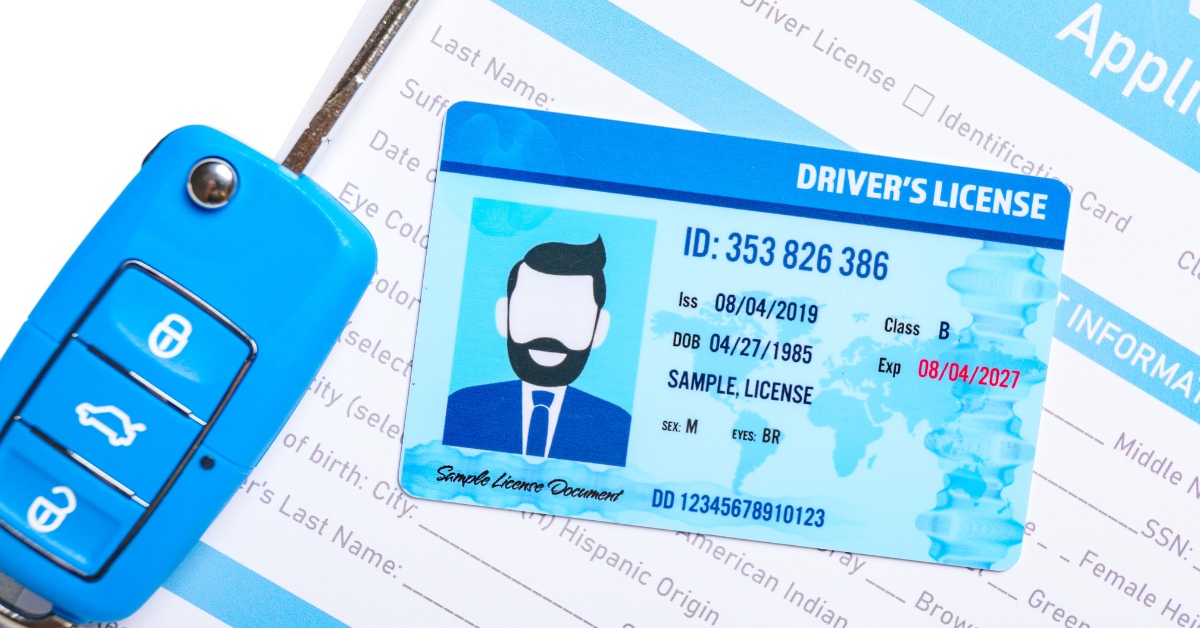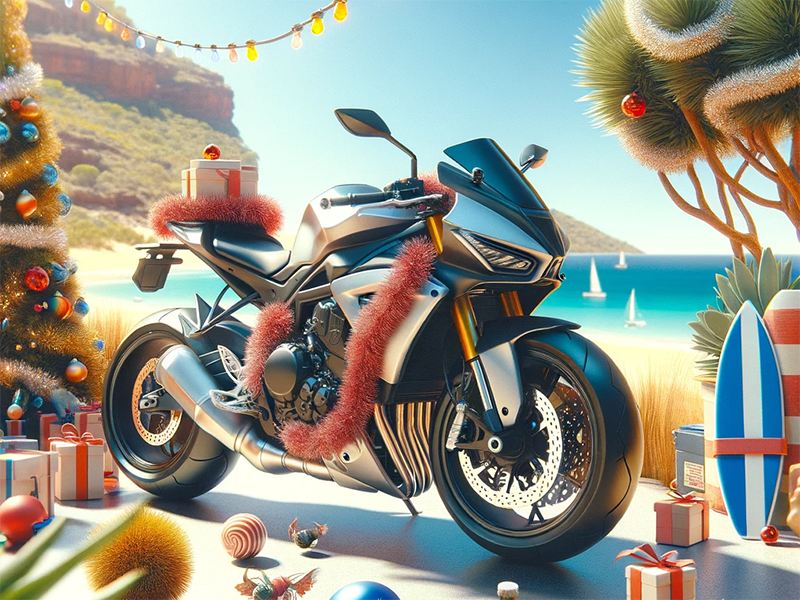Scooter license requirements differ between Australian states. Generally speaking, to ride a scooter in most Australian states and territories, you must possess a motorcycle license, however each state has its own specific requirements. The states that allow scooter use with a valid driver’s license mandate the scooter has an engine capacity of 50cc or less and/or if it has a top speed limit of 50 km/h (these types of scooters are often referred to as “mopeds”, which we’ll cover later in the article).
Regardless of scooter licensing requirements, it’s critical to keep in mind that operating a scooter differs greatly from operating a vehicle. On a scooter, there is a heightened sense of awareness required to mitigate risk by being fully cognizant of other road users, practicing safe riding techniques, adhering to road rules and several other considerations. Due to these added skill requirements, it his highly recommended to enrol in a licensing or riding skills program and receiving the necessary training before hitting the road.
The general scooter licencing requirements in Australia are as follows:
- If your scooter has an engine capacity of 50cc or more or can travel faster than 50 km/h a motorcycle licence is required in all states and territories.
- In SA, QLD, WA or NT, if your scooter’s engine capacity is below 50cc and cannot travel faster than 50km/h, you can ride if you hold a C class licence.
- Note: these performance restricted scooters are calle ‘mopeds’.
- If you live in ACT, NSW, TAS or VIC you will need a motorcycle licence regardless of your scooter or moped’s performance capabilities.
The Distinction Between Mopeds and Scooters
Before you plan to hit the roads or buy a scooter or moped, you should understand the difference between these two terms. Though both are similar in their design, they differ from one another in a few ways, which affects licence requirements from state to state.
Scooters
Scooters without a speed limit fall under the category of “motorcycles” with an engine capacity of at least 50cc. Depending on the terrain, most scooter engines have a 125cc starting engine and may reach speeds of 80 to 90 km/h. Because of their larger frames compared to mopeds, scooters are more suitable for longer rides, particularly when commuting on highways or other high-speed roads.
Regardless of the capabilities of your scooter, you should always wear protective gear when riding. A helmet, gloves, and protective shoes and clothing are essential when riding.
Mopeds
Mopeds, on the other hand, may travel up to 50 km/h at their maximum and have engines as large as 50cc. They are portable, lightweight, and appropriate for city settings, particularly at slower speeds. Mopeds, like scooters, feature a step-through frame design, allowing the rider to mount and dismount easily.
When riding a moped, you should always make an effort to stay away from roads with speed limits of more than 50 km/h and more importantly, high-speed roads like freeways and motorways. Given the speed limitations of a moped, it can be a safety hazard to ride on high-speed roads, causing frustration with other drivers, traffic jams and ultimately the risk of an accident. What’s more is that if you are caught traveling more than 20kms below the speed limit, you could be fined for obstructing traffic (this law may differ from state to state).
50cc Scooter: License requirements
As discussed above, it may come as good news to those who own a 50cc scooter or are planning to buy one in SA, QLD, WA or NT, that only a C class driver’s licence is required to ride! However, in ACT, NSW, TAS and VIC a motorbike licence is required for all scooter and mopeds.
You must also keep in mind that there are age restrictions in place in all states and territories, where you must be at least 16 years old to ride a 50cc scooter (in some states you must be 17 and over).
Engines Larger Than 125cc: Licence guidelines
In all states and territories, you must have a licence to ride a scooter with an engine size of 125cc or over. Each state has its own version of a written and practical motorbike licence test conducted to assess your theoretical knowledge and riding skills. Visit Stay Upright to check the specific requirements in your state and when you’re ready to hit the roads, book a motorcycle training course to bring you up to (a safe) speed!
Can you ride a scooter with people on it?
The laws around riding with pillion passengers on a scooter varies from state to state. For instance, scooter riders in Queensland are only permitted to transport passengers if they have had a motorbike license for a minimum of one year. When riding a scooter in Victoria for example, you must not carry a pillion passenger when you are on your motorcycle learners permit (although sidecars are allowed). So depending on which state you’re riding in, the type of motorcycle licence you possess and the length of time you have been riding, the laws can differ and it is important to do your research.
How do I get my motorbike licence?
The process of applying for a motorcycle licence should not be difficult. You can handle the entire process yourself or you can enroll in motorbike training schools like Stay Upright that will assist you in getting your motorbike licence. These motorcycle riding courses offer training in learning how to ride, passing the practice tests, and studying for the written tests, ultimately making the process to get your motorbike licence smooth and enjoyable.
Here are some quick steps to getting a motorbike licence (each step varies from state to state):
Check Your Eligibility:
Before applying for a motorcycle licence, be sure you meet the criteria. This usually means being of a certain age (a minimum of 16 years old) maintaining a valid driver’s license for a set period, and/or sitting a test (such as the VIC learners practice test).
Get a Learner’s Permit:
Some states require drivers to have a mandatory learner’s permit. This where you’ll need to pass a written and practical riding test to assess your knowledge on traffic regulations, riding safety, riding skills and overall ability to ride safely on public roads. It is also important to note that in most states you will be required to submit a medical declaration confirming you are fit and able to ride a motorcycle.
Practice Riding:
Throughout the term of your motorcycle learner’s permit, it is essential to spend time practicing in a safe environment to ensure you feel at ease when riding your scooter or moped. Riding is a life-long passion, and you will always be learning and honing skills on the road – so you can never have enough riding practice!
Pass the Practical Assessment:
To progress to a provisional or full license, you must pass the practical riding assessment. This riding test evaluates your practical use of safe riding skills and technicques. If you pass, you will progress to the next phase of your licensing journey.
Provisional or Full License:
After passing the practical test, you will often receive a provisional motorcycle licence where other restrictions may still be in effect, such as caps on engine capacity, passenger restrictions or a zero alcohol policy. After the probationary period has been completed and you have met all further requirements, you can apply for a full motorcycle license.
Maintain a Clean Driving Record:
Maintaining a clean driving record can be crucial in terms of your ability to progress to a full licence. Any traffic violations or convictions may affect your eligibility for a motorcycle licence and may result in the suspension of your driving or riding privileges.
Conclusion
Generally speaking, you need a motorcycle license to ride a scooter. If you are planning to ride, you must be well-versed with the laws in your state and ensure you are proficient in all aspects of motorcycle safety before hitting the roads. Engaging a motorcycle riding school in Australia to help you obtain a licence can be a fast track to honing your knowledge and skills, and ultimately passing that exam. Remember, a motorbike licence is just not a piece of paper, but a certification that demonstrates your ability to ride safely and proficiently on all Australian roads.



